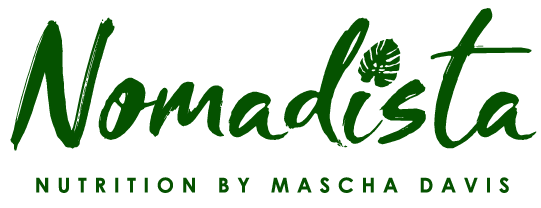Do you ever walk down the bar aisle in the grocery store and feel instantly overwhelmed? You aren’t alone. There are so many choices and knowing which is the “best” can feel confusing. In this post I'm going to share some key nutrients to look out for (and what to avoid) when searching for a protein bar. I’ll also share my favorite bar recommendation at the end!
Nutrients to Look for in a Protein Bar
High Quality Protein: You ideally want a bar that has at least 8-10 grams of protein. You might be surprised how many “protein bars” are actually lacking in protein! Protein helps to keep you fuller in between meals and is important to help you recover after a workout. I prefer bars with plant protein sources like almonds, rice, or pea protein. If you enjoy and can tolerate whey, that is fine, too. Look for protein as one of the first three ingredients in a protein bar.
Healthy Fats: Bars with healthy fats coming from foods like nuts, seeds or nut butters are great to help stabilize the blood sugar response while also providing delicious flavor. Fats from nuts and seeds also provide micronutrients like vitamin E, calcium and magnesium.
Low Glycemic Carbs: The glycemic index of a food speaks to how it impacts blood sugar. Low glycemic carbs are less likely to spike blood sugar which is important for sustained energy and also for managing conditions like diabetes. Bars filled with added sugars are more likely to spike blood sugar whereas bars sweetened with things like fruits, dates or even prebiotic tapioca syrup will provide more steady energy.
Nutrients to Avoid:
Too Many Artificial Ingredients. For example, large amounts of manmade sugar alcohols (such as xylitol, mannitol and sorbitol) may cause undesirable digestive symptoms (bloating, gas etc) when consumed in excess for some people. However, if you find you don’t have an adverse reaction to these ingredients, then you can safely consume them.
Partially Hydrogenated Oils. Also known as artificial trans fats. While the FDA banned these fats in 2018, some processed foods on the market may still contain small amounts. Consumption of trans fats has been linked to negative health outcomes like high cholesterol and heart disease.
Fractionated Palm Kernel Oil. Not only is this bad for the environment, this highly processed oil contains mostly saturated (i.e. the least healthy) type of fat, so it’s best to avoid it.
Soy Protein Isolate. While soy is not inherently unhealthy, highly processed i.e. ‘isolate’ versions of it are.
High Amounts of Added Sugar. As mentioned above, high added sugar (more than 8 grams) can spike your blood sugar, giving you a short boost of energy followed by a crash.
So what is my top protein bar recommendation?
There is one bar that is filled with high quality plant protein, healthy fats and low glycemic carbs. Zing bars are a great option to have on hand to tackle afternoon hunger, fuel your workouts or they can even be paired with other foods like fruit and yogurt for a quick breakfast. If you want to try these bars head to their website here and use NOMADISTA20 for a discount!



